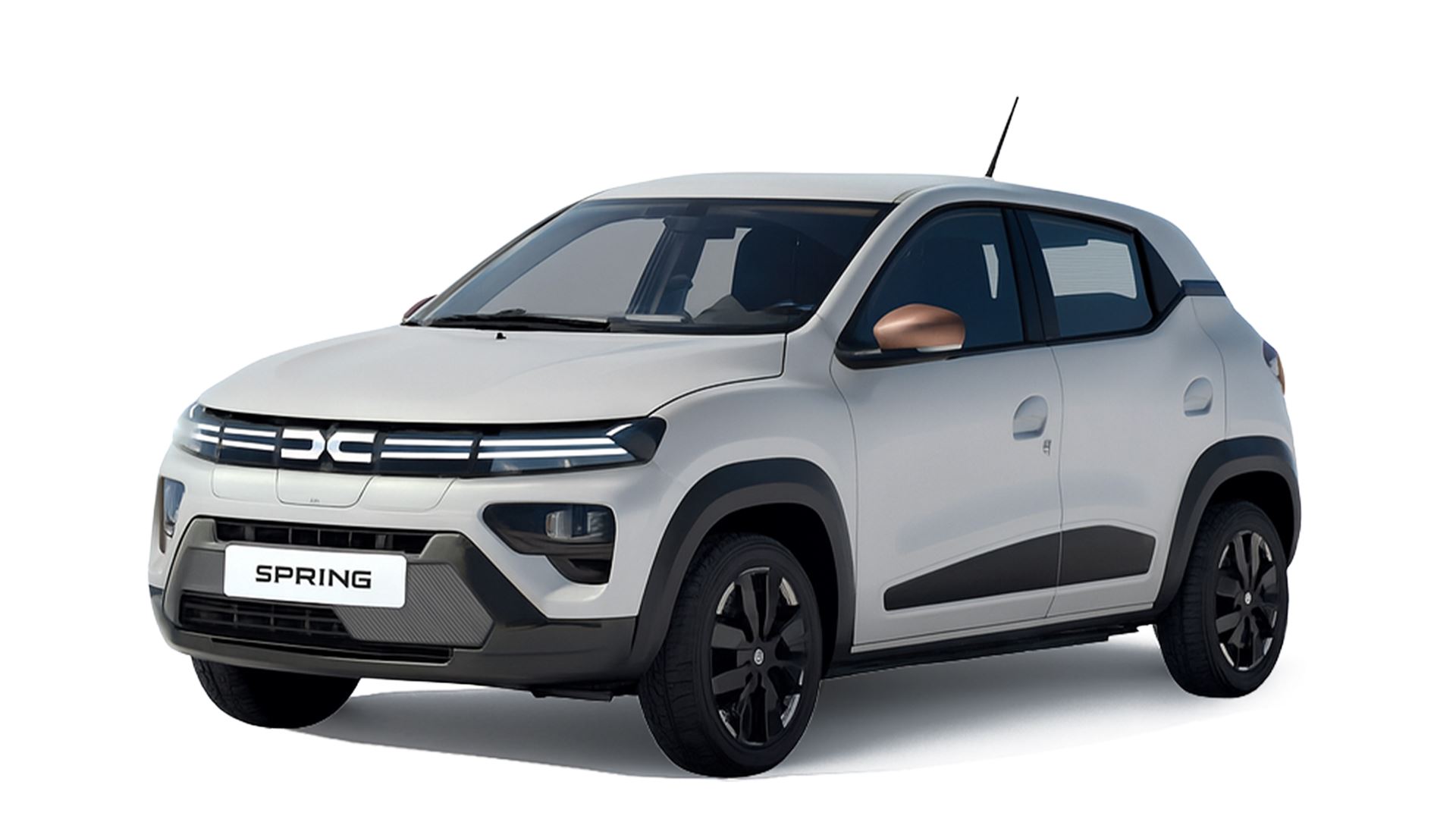Dacia Spring
Extreme 65 electric FWD automatic
Sustainability Rating: 5 stars
Our verdict:
The new Spring, Dacia’s supermini, is the first car to achieve 100% in Green NCAP’s rating. Tested here is the 48 kW version. The vehicle is designed for urban use and its sustainability analysis profits from its minimalism – the car weighs only 979 kg and features a very small battery of 27.6 kWh usable capacity. The light weight and the small battery are advantageous for all indices. The measured consumption values are not as low as could be expected for such a vehicle, which might be the consequence of compromises with powertrain and heating system efficiency.
- The Spring has no tailpipe emissions and scores top marks for tyre and brake abrasion due to its low weight and rear drum brakes. Production and energy supply emissions are below Green NCAP thresholds.
- While generally low, the in-lab measured energy use is higher than expected for such a small car. The on-road test, however, showed very low consumption of 15 kWh/100 km in the mixed scenario and only 11.7 in the short urban trip.
- The Spring’s small size, low mass and tiny battery earn it full points. Lifecycle emissions are 90.4 g CO2-eq./km, of which 50 come from the car’s production in China. Europe’s relatively clean electricity mix supports its performance.
Driving Experience
Our comments:
The Spring is positioned in the low-end price range and this might become visible in some aspects of daily use. Tested here is the top trim ‘extreme’, which brings the highest equipment level.
- The estimated warm weather real-world consumption values of the Dacia are all in the ‘adequate’ range which is, as stated for the Energy Efficiency Index, rather surprising for such a small and light vehicle. Due to the relatively low additional energy use for heating, the winter consumption estimations show ‘good’ values in urban and mixed driving, which eventually turns the overall result in this section to ‘good’. However, with a battery that small, all estimated driving ranges are ‘poor’, meaning that users should plan their trips and charging opportunities carefully. The consumption readings on the board computer display are good enough.
- The Spring does not make any noteworthy winter driving range benefit of preheating while plugged, due to the small battery and the little difference between the cold and warm start winter tests. The heating is manually controlled and it needs to work at its maximum or close to it at most of the time to provide thermal comfort at -7°C. The small Dacia surprisingly reached very quickly the 16°C target temperature in front and rear head area, but neglected the footwell. The front compartment needed significantly more than the duration of one entire test to get to the target temperature, while the rear foot area did not reach it at all. The Dacia cannot be equipped with any additional heating functions and only relies on its PTC heater. A highlight in the top trim version is the possibility to schedule or remotely activate the cabin heating. The cabin thermal insulation is evaluated as ‘poor’.
- At home AC charging, the vehicle could take approx. 7 kW and demonstrated a slightly below standard grid-to-battery output efficiency of 86.3%. Fast charging is not its strength, as it could only reach a maximum DC power of 34 kW and needed 40 minutes to recharge from 10 to 80% SoC. Given the small battery, the recharged range per minute is also minimal. However, the top version of the Spring offers an unexpected nice-to-have function of vehicle-to-load 230 V energy supply for external devices of up to 3.7 kW power. Along with the Hyudai Inster, the Spring demonstrates that this feature should not be reserved only for premium high-power vehicles, and can contribute to a better user experience.
See datasheet for more details.

